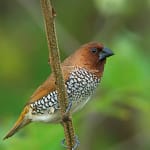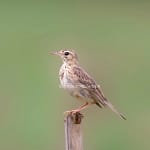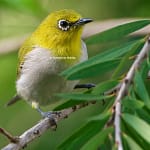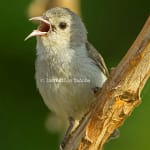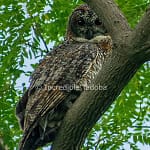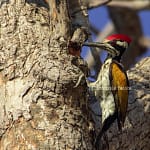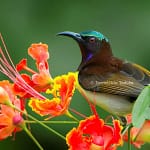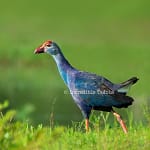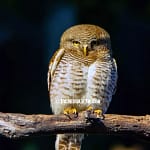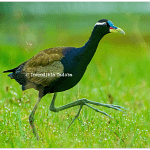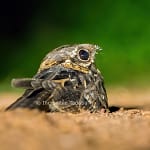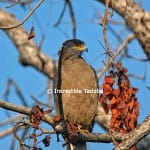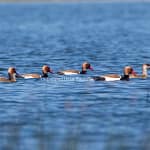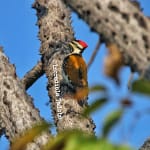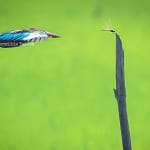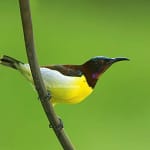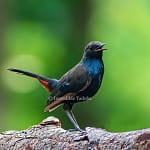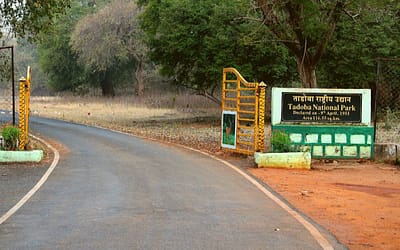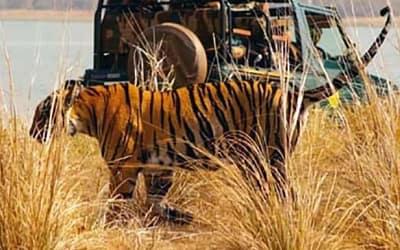Birds of Tadoba
Tadoba lake is also known as an ornithologist’s paradise. It is one of the best birding goals in Maharashtra with thick, bamboo zones, meadows, and wetlands that suit both the woodland and the wetland flying creatures.
The presence of Stream Andhari inside the Tadoba National Park offers a route to a wide decent variety of water-winged creatures, and raptors.
Tadoba also witnesses summer and winter migratory birds from East Africa and Siberia every year. The intriguing feathered species found in Tadoba Andhari Tiger Reserve including the migratory are
- Scally Breasted Munia
- Paddyfeild Pipit
- White-Eye Buzzard
- Oriental White Eye
- Pale-billed flowerpecker
- Mottel Wood Owl
- White-naped Woodpecker
- Purple Rumped Sunbird
- Swamphen
- Forest Owlet
- Bronze Winged Jacana
- Night Jar
- Serpent Eagle
- Open Billed Stork
- Red-Creasted Pochards
- Flameback Woodpecker
- White-Breasted Kingfisher
- Honey Buzzard
- Purple-Rumped Sunbird
- Indian Robin
Orange-headed Thrush, Indian Pitta, Crested Treeswift, Stone Curlew, Crested Honey Buzzard, Paradise Flycatcher, Lesser Goldenbacked Woodpecker, Warblers,
Black-naped Blue Flycatcher, Oriental Honey Buzzard, White-eyed Buzzard, Pariah Kite, Eurasian Sparrow Hawk, Black Shouldered Kite, Shikra, Short-toed Snake Eagle, Bonelli’s Eagle, Common Kestrel, Open Bill Stork, Black Ibis, Bar Headed Goose, Black Strok,
Lesser Adjutant Strok, Brahminy Duck, Comb Duck, Little Grebe, Grey Heron, Large Egret, Median Egret, Indian Shag, Purple Heron, Banded Bay Cuckoo, White-breasted Water Hen, Green Sandpiper, Wood Sandpiper, Common Sandpiper, River Tern, Painted Sand Grouse, Jungle Bush Quail, Indian Peafowl, Spotted Owlet,
Forest Wagtail, Grey Wagtail, White Wagtail, House Sparrow, Indian Robbin, Indian Roller, Ruby Throat, Blue Throat, Black Redstart, Grey Tit, Common Stonechat, Brahminy Myna, Asian Pied Starling, House Crow, Large-billed Crow, and many more.
Birding, or bird watching, is a fascinating hobby that can be enjoyed by people of all ages. It’s a great way to connect with nature and learn about the amazing variety of birds that live in our world. If you’re thinking about going on a birding safari, there are a few things you need to know to make the most of your experience.
Below are some of the tips to have In this article, we’ll share our top tips for bird watching.
1. Be quiet.
Silence is the key to successful birdwatching. Some birds are easily frightened by sudden noise and will fly away to take cover. The quieter you are, the closer you can get to the bird.
2. Patience is a virtue.
Birdwatching requires a lot of patience. You often have to sit and wait until you spot a bird or until it moves into a more visible spot.
3. Eyes First, Binoculars Second.
Good binoculars are also birdwatching essentials. Make sure that your binoculars are getting a bright, crisp picture. We recommend 7-power or 8-power binoculars – these give good magnification as well as allowing a wide enough view.
However, before whipping out the binoculars, try spotting a bird with your naked eye. It’s easier to spot a bird without binoculars. Relax your eyes, keep your head still, look for movement and listen for sounds – once you’ve spotted the bird, then bring the binoculars up to your eyes for a closer look.
4. Use A Field Guide.
A field guide will help you identify and distinguish between birds. We will be happy to assign you a naturalist to make the best of your birding safari.
5. Wear Neutral Clothing.
This rule applies to safari in general – whether bird watching or game viewing, it’s best to wear neutral clothing. Neutral colors help you blend in with your surroundings so the birds are less likely to notice you.
6. Be Specific.
Once you’ve spotted a bird, it’s likely you’ll want to tell your fellow birders. When you’re giving directions as to where a bird is, be specific as possible. Use large points of reference first (e.g. the large thorn tree to the right) and then become more detailed (e.g. the lowest branch on the right, with the fewest thorns). You can also use the clock system (e.g. Thorn tree 2 o’clock).
7. Keep Record.
Carry a small notebook where you record your sightings. Take note of how you identified a bird to help you in future. Most birders also keep a life list, which is a list of all the birds they’ve seen since starting birdwatching.

